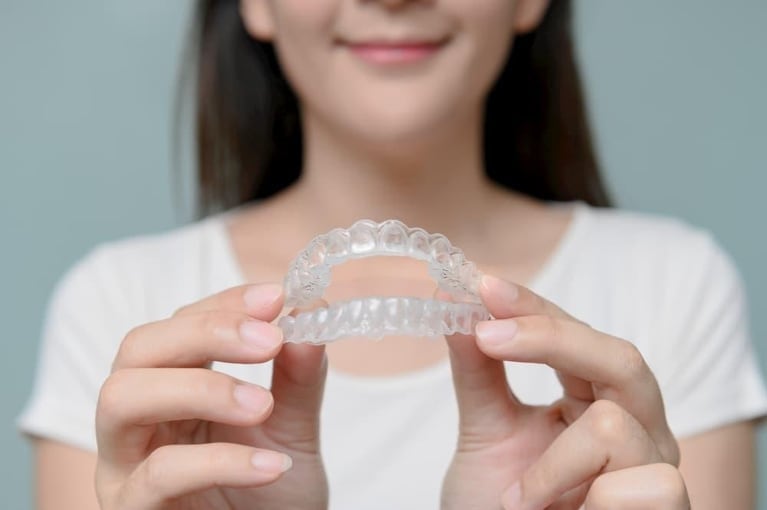Introduction
When it comes to straightening your teeth, you have two popular options: Invisalign and traditional braces. Both methods have their pros and cons, and choosing the right one for you depends on various factors. In this article, we will compare Invisalign and traditional braces to help you make an informed decision.
Appearance
One of the main advantages of Invisalign is its nearly invisible appearance. These clear aligners are made of transparent plastic, making them much less noticeable than traditional braces. On the other hand, traditional braces consist of metal brackets and wires, which are more visible.
Comfort
Invisalign aligners are custom-made to fit your teeth comfortably. They are smooth and do not have any sharp edges that can irritate your gums or cheeks. Traditional braces, on the other hand, may cause discomfort and soreness, especially during the initial adjustment period.
Treatment Duration
The duration of your orthodontic treatment can vary depending on the complexity of your case. In general, Invisalign treatment tends to be faster than traditional braces. With Invisalign, you typically change to a new set of aligners every two weeks, gradually moving your teeth into the desired position. Traditional braces may require adjustments every four to six weeks.
Maintenance
Maintaining good oral hygiene is crucial during orthodontic treatment. With Invisalign, you can remove the aligners when eating or brushing your teeth, making it easier to clean your teeth properly. Traditional braces, however, require extra effort to clean around the brackets and wires.
Dietary Restrictions

With traditional braces, there are certain food restrictions to prevent damage to the brackets and wires. Sticky or hard foods, such as chewing gum or popcorn, should be avoided. Invisalign aligners can be removed while eating, allowing you to enjoy all your favorite foods without any restrictions.
Effectiveness
Both Invisalign and traditional braces are effective in straightening teeth. However, traditional braces may be more suitable for complex cases that require significant tooth.
Summary
Invisalign and traditional braces are both effective ways to straighten teeth, but they differ in terms of appearance, comfort, and maintenance. Invisalign offers a more discreet and flexible option, as the aligners are virtually invisible and can be removed for eating and cleaning. On the other hand, traditional braces are fixed onto the teeth and may require more frequent visits to the orthodontist for adjustments. Ultimately, the choice between Invisalign and traditional braces depends on your personal preferences, lifestyle, and the severity of your orthodontic issues. By considering these factors and consulting with an orthodontist, you can make an informed decision that will lead to a beautiful, straight smile.
- Q: What is Invisalign?
- A: Invisalign is a type of orthodontic treatment that uses clear aligners to straighten teeth.
- Q: What are traditional braces?
- A: Traditional braces are metal brackets and wires that are used to align and straighten teeth.
- Q: Which is more discreet?
- A: Invisalign is more discreet than traditional braces because the aligners are clear and virtually invisible.
- Q: Which is more comfortable?
- A: Invisalign aligners are generally more comfortable than traditional braces because they are smooth and don’t have any sharp edges.
- Q: Can I remove Invisalign aligners?
- A: Yes, Invisalign aligners are removable, allowing you to eat, drink, brush, and floss without any restrictions.
- Q: How often do I need to visit the orthodontist with Invisalign?
- A: Typically, you will need to visit the orthodontist every 4-6 weeks to check the progress and receive new sets of aligners.
- Q: How long does the treatment take with traditional braces?
- A: The treatment time with traditional braces can vary, but it usually takes around 1-3 years to achieve the desired results.
- Q: Can I play sports with Invisalign?
- A: Yes, you can play sports with Invisalign. It is recommended to wear a mouthguard to protect your teeth during physical activities.
- Q: Which option is more suitable for complex orthodontic issues?
- A: Traditional braces are often more suitable for complex orthodontic issues as they provide more control and precision in tooth movement.
- Q: Which option is more expensive?
- A: In general, Invisalign treatment tends to be slightly more expensive than traditional braces.

Welcome to my website! My name is Dr. Andrew Prinsep, and I am thrilled to share my passion for aesthetic dentistry, Invisalign and braces, dental checkups, and oral cancer screenings with you.
As a professional dental assistant, I have dedicated my career to helping patients achieve their dream smiles and maintain optimal oral health.

